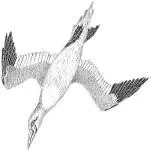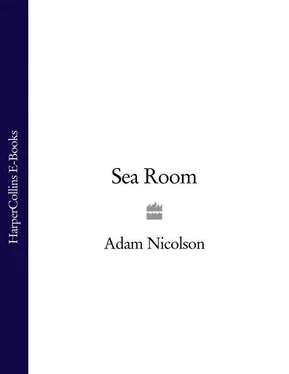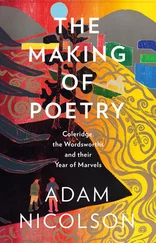That, I think, is wrong and this book is in part a response to it. I may be in possession of the deeds of the Shiants, I may love them more than anywhere else on earth, but I do not feel that I have anything resembling an exclusive right to them, or that any landlord could. For all MacCallum’s afflatus – you can see his face reddening as he makes his statement, his rhetoric inflating and wobbling like the proboscis of an elephant seal in front of the Commissioners, and then its collapse as their scepticism exacts its price, his deflation afterwards, his running over it in his mind back at the manse: the passages where it had sounded good; those where, as even he suspected, it hadn’t – despite all of that, he was right about this. Land – particularly land that is out on the edge of things, and particularly land that is a rich concentration of the marvels of the natural world – is to be shared. This book is an attempt to share the Shiants.
They are not really a lonely place. That is a modern illusion. For the Shiants, the question of solitude figures only twice: once in the flowering of Columban monasticism between the seventh and tenth centuries, and once in the twentieth century. For most of their history, the Shiants were not, like some piece of Wagnerian stage scenery, lumps of rock in a hostile sea, beside which the solitary hero could exquisitely expire. They were profoundly related to the world in which they were set. Until 1901 they were almost continuously inhabited, perhaps for five thousand years. Our modern view of such places as orphans or widows, drenched in a kind of Dickensian poignancy of abandonment, is, on the whole, wrong. The Shiants are rich: in the kind of island beauty to which, it is clear, men have been drawn over many thousands of years; in soils and natural fertility; in the seas around them thick with plankton, and with the layers of predatory fish and sea birds stacked four or five tiers above that. These islands in their season are the hub for millions of bird and animal lives, as dynamic as any trading floor, a theatre of competition and enrichment. They are the centre of their own universe, the organising node in a web of connections, both human and natural, which extends first to the surrounding seas, then to the shores on all sides and beyond that, along the seaways that stretch for thousands of miles along the margins of the Atlantic and on into the heartlands of Europe.
For all the illusion of remoteness, the Shiants have never been parochial. They are part of the whole world and are a profoundly human landscape, the subject of stories, songs and poems. They have been the scene of attempted murder, witchcraft and terrible accidents. They have witnessed all kinds of happiness and cruelty. They have known great riches and devastating poverty. They can be as sweet as Eden and as malevolent as Hell. They can envelop you and reject you, seduce you into thinking nowhere on earth is as perfect and then make you long to be anywhere but this. I have never known a place where life is so thick, experience so immediate or the barriers between self and the world so tissue-thin. I love the Shiants for all their ragged, harsh and delicate glory and this book is a love letter to them.

EARLY APRIL AND A COLD WIND was cutting up from the south-west. Freyja was anchored in the little rocky inlet at the head of Flodabay on the east coast of Harris. A seal watched from the dark water. Acid streams were draining off the moorland into the sea. The boat swung a little and the reflected sun glinted up at the strakes of her bilges. I was shivering, not because of the cold, but because I was frightened at the idea of sailing out alone in this small boat to the Shiants. The halyard was slapping against the mast and the tiny waves clucked as they were caught against the underside of the hull. The shores of Flodabay were sallow and tussocky with the dead winter grasses and the boat was washed in late-winter sun. Freyja is sixteen feet from stem to stern and looks from the shore as slight as a balsawood toy. She and the Minch are not to the same scale.
It was the first time I was going to sail to the Shiants on my own. Always before, I had allowed myself to be carried out by fishermen from Scalpay or boatmen from Lewis, travelling as I now see it like a man in a sedan chair, gracefully picked up, carefully taken over and gently set down. That could never be enough. That was not being engaged with the place. An island can only be known and understood if the sea around it is known and understood.
Six months previously, I had read a history of the birlinn , the sailing galley descended from Viking boats that was used in these waters by the highland chiefs, at least until the seventeenth century. They raided and traded with them. Their lives were as much bound up with them as with any land-based habitation. The book described the carving of a birlinn surviving on the tomb of Alasdair Crotach, Hunchback Alasdair, the Macleod chieftain in Harris in the mid-sixteenth century. He was a violent man, the mass murderer of a cave-full of Macdonalds on Eigg, men, women and children, three hundred and ninety-five of whom he suffocated with the smoke of a fire lit at its narrow mouth.
This killer’s birlinn is an image of extraordinary beauty.
The form and curve of each strake, the fixings of the rudder, even the lay of the rope in the rigging: everything is carved with exactness, clarity and what can only be called love. Around it are the relative crudities of angels, apostles and biblical stories. Their forms never escaped the stone but the carved ship shows the panels of cloth in the bellied-out sail. It even shows the way a sail can be creased against a forestay that is faintly visible through it. Above all, though, it lovingly described the form of the hull, the depth of its keel and the fullness of the bilges. All of this was carved in millimetre detail, testament of something that mattered. The birlinn was shown at full stretch and fully rigged, but out of the water, so that the swept beauty of the hull could be seen. Only a shipwright or a sailor could have carved such a thing: it is the mental, not the actual image of a ship at sea, a depiction of what you can imagine of a boat at its most perfect moment, made by a man who knew it. The author of the birlinn history had set a Gaelic proverb at the head of his central chapter:
‘S beag ‘tha fios aig fear a bhaile,Cia’mar ‘tha fear na mara beò .
The landlubber [literally the man of the village] has no idea
How the sailor [the man of the sea] exists.
That was the gap I wanted to cross; to acquire the habits of mind which the carver of the birlinn had so easily conveyed. I rang the author, John MacAulay. He lived in Flodabay in South Harris. Did he know of anyone who might be able to build me a boat that would take on something of that Norse tradition? That I could sail single-handed? Which would be safe and strong enough to survive in the Minch, even on a bad day, and which might be hauled up a beach, at least with the help of a winch?
‘Ah yes,’ John said, a light, slight voice. Definite, polite, courteous, withdrawn, sharp, sprung.
‘In Harris, would that be?’ I asked him.
‘Yes, I think it would.’
Wonderful news. And who was the shipwright?
‘Well, I think you are speaking to him now.’
John MacAulay was not only a historian of the Viking inheritance, but a boat builder of thirty-five years’ experience. He had made and repaired fishing boats in the Shetland island of Unst, and at Oban and Kyle. He had been a fisherman and was an experienced yacht sailor. He was one of the leading experts on both the history of the sea kayak and the traditional working boats of the Hebrides. He was an elder of his church in Leverburgh and author of a book on the church at Rodel in which the birlinn carving was to be found. For two months or so John and I corresponded by letter and occasionally by phone. I said I thought I could do what I needed to do with a twelve-foot boat. He said it would have to be at least sixteen foot. ‘I’m not sending you out there in something twelve foot long.’ I wanted something ‘double-ended’, coming to a point at bow and stern. John said, ‘That would be a waste of wood. You’ll want a transom on it.’ A sixteen-footer with a transom – the stern cut off square – was the equivalent of a twenty-footer that came to a point at the stern. Timber in the treeless Hebrides was always at a premium. ‘It would be a waste of wood. And time. And money,’ he said.
Читать дальше













